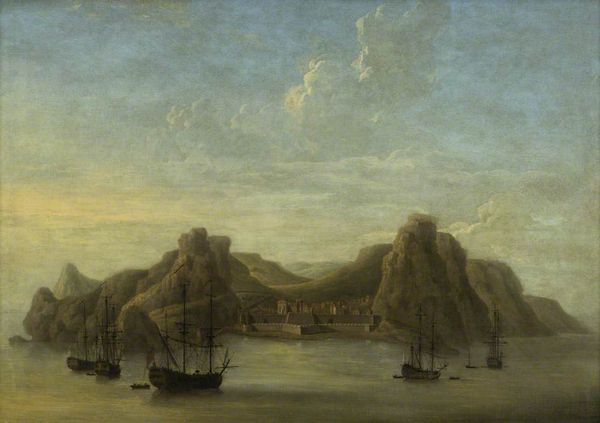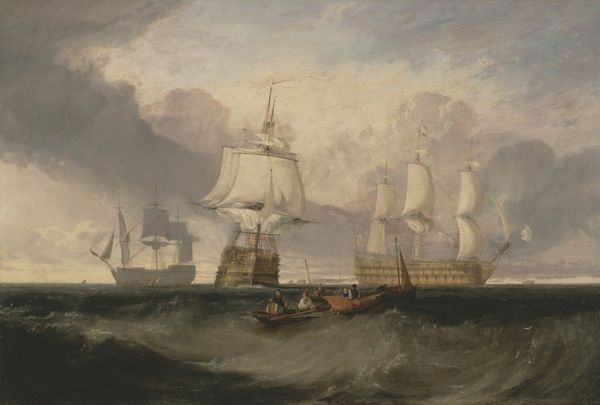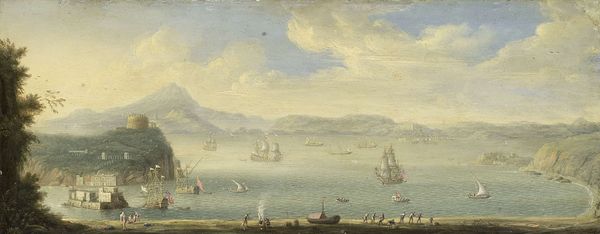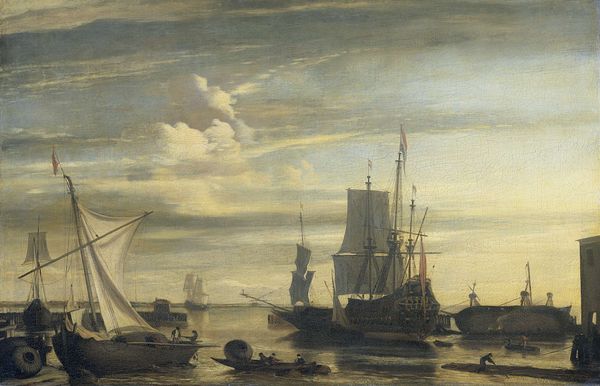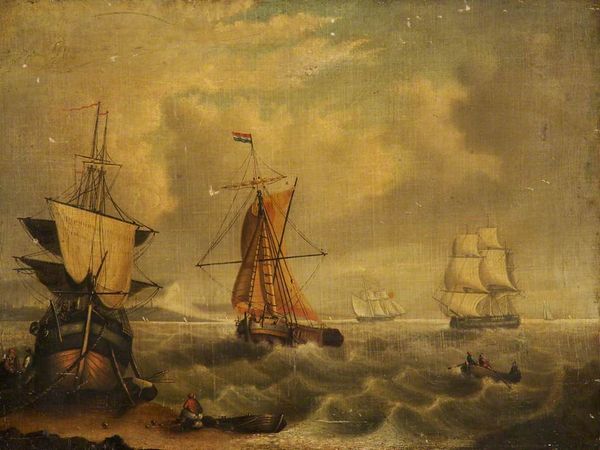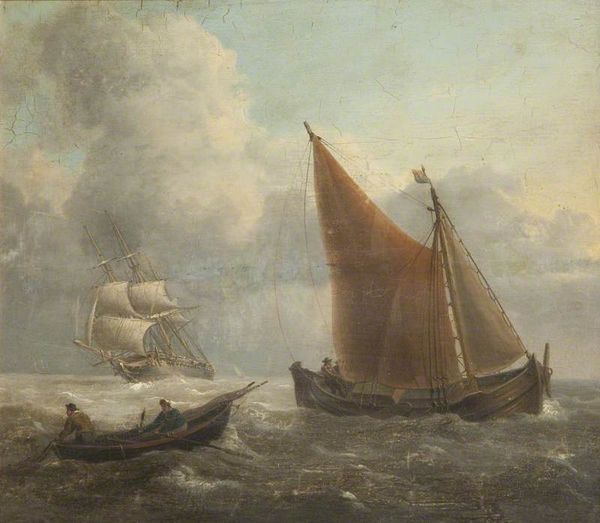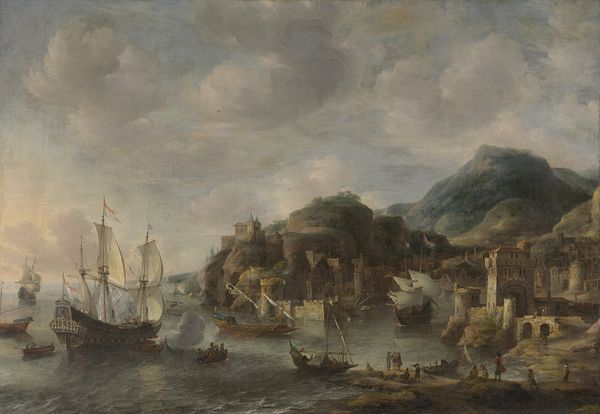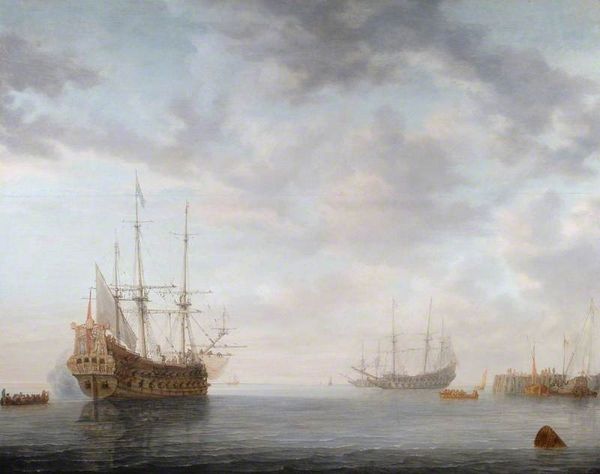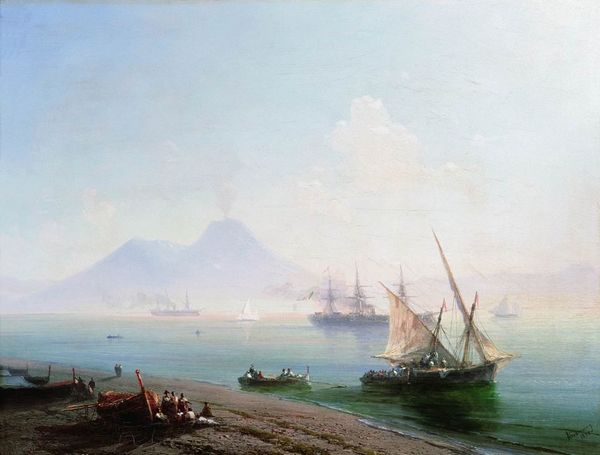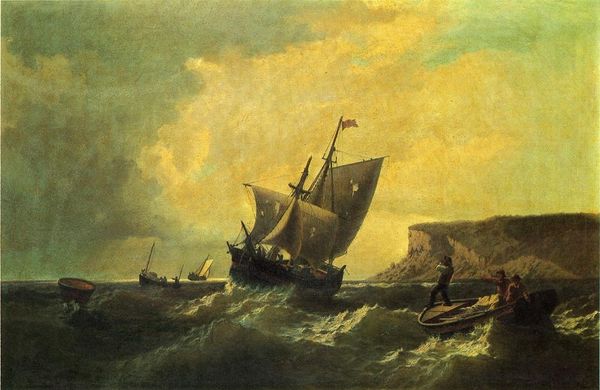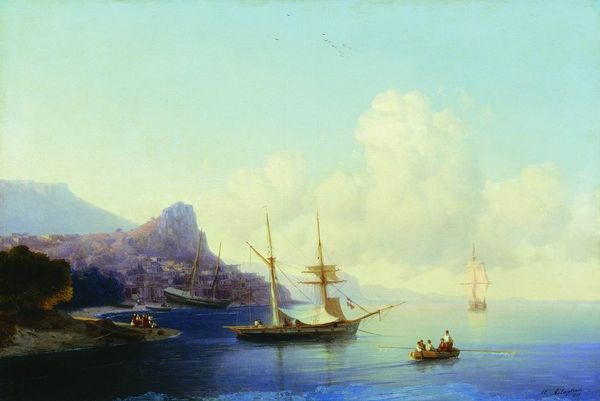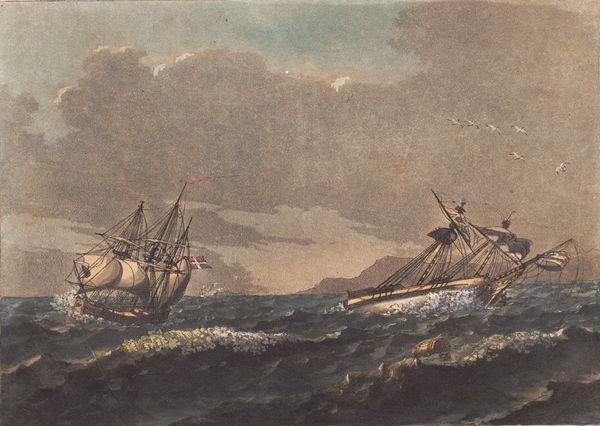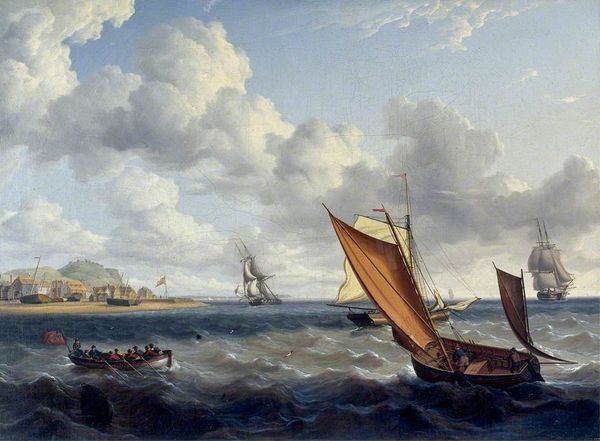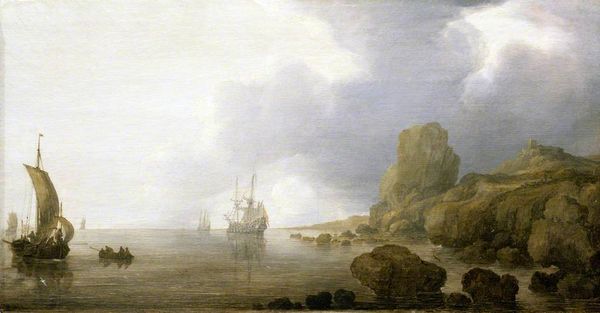
painting, oil-paint
#
baroque
#
painting
#
oil-paint
#
landscape
#
cityscape
#
genre-painting
#
history-painting
Copyright: Public domain
Editor: Here we have "Cape of Good Hope," an oil painting by George Lambert, created in 1731. It's quite striking. I'm initially drawn to the contrast between the detailed ships and the rather hazy, almost dreamlike quality of the mountains in the background. How do you approach interpreting a piece like this? Curator: One may focus primarily on the composition. Notice how Lambert deploys a series of horizontal layers: the sea, the ships, the town nestled at the base of the mountain, and the mountains themselves. These layers create a sense of depth and recession, drawing the eye into the pictorial space. Further analysis might observe how he employs the dark tones of the ships to establish a firm foreground, while the lighter tones and softer edges of the mountains recede into the distance, a masterful demonstration of atmospheric perspective. Editor: So you're focusing on the relationship between the different elements of the painting and how they're arranged to create a particular effect? Curator: Precisely. Consider, too, the treatment of light. It appears diffused, almost even, bathing the entire scene in a gentle luminescence. This has the effect of flattening the forms somewhat, reducing the contrast between light and shadow. We might interpret this as contributing to the painting's overall sense of tranquility. Observe the varying texture that emerges through his rendering of light across forms. Editor: I see what you mean. It's not about the literal representation, but about how Lambert uses light and shadow to organize the space and guide our gaze. Are there particular techniques that Lambert uses that highlight this focus? Curator: Note the glazing technique and limited impasto, if you observe the materiality of the surface itself. It's evident the artist took care to achieve luminous affects within a highly composed, and carefully-structured, two-dimensional field. This work highlights structure as a fundamental means of expression. Editor: That’s really interesting. I was initially caught up in trying to understand what the scene represents, but I can appreciate how a focus on the formal elements unlocks a completely different level of understanding. Curator: Indeed. Shifting our perspective allows us to move past representational considerations, diving deeper into the language of art itself.
Comments
No comments
Be the first to comment and join the conversation on the ultimate creative platform.
